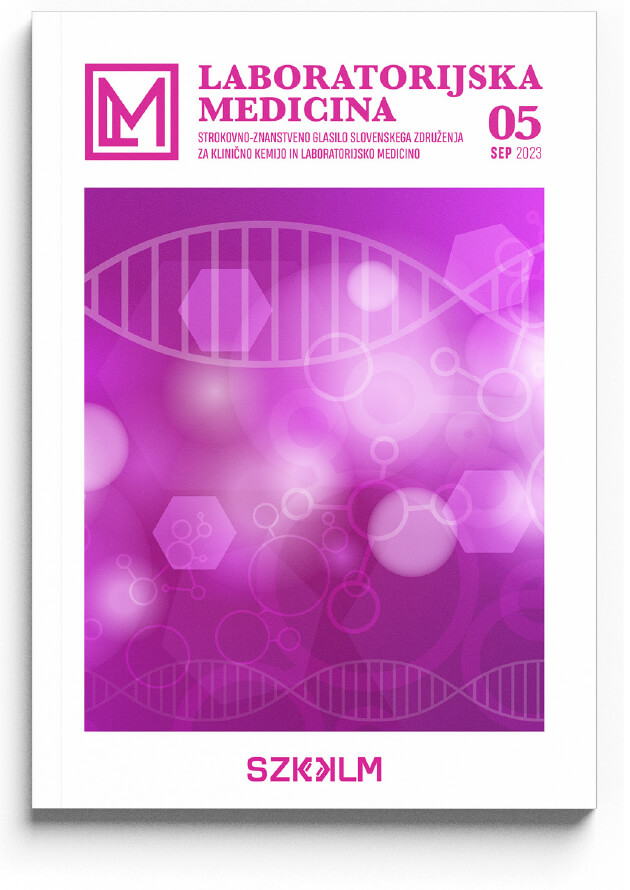INTRODUCTION
It is of pertinent importance to attain health equality even beyond the existing differences in health, biology, or social status with the motto of health for all. (1). The gender influence, which refers to the social identities and relations between sexes, constitutes a risk factor for discrimination in medical care. The gender based social code is linked to the feminine and masculine genders, influencing the expression of symptoms, the relationship to one’s body, and the care required during sickness period. (2). Among physicians and caregivers, gender-related prejudices are likely to impact the interpretation of clinical signs and the management of pathologies (3). According to the joint report of the International Labour Organization and World Health Organization, in the health and social care sector, women face a larger gender pay gap than in other economic sectors, making 24% less than men (4). According to a global review carried out during the coronavirus disease 2019 (COVID-19) pandemic, there were only slight advances in pay equity in 2019 and 2020, despite the essential role performed by health and care workers during the pandemic (5). In almost every nation, the relationship between social inequality and health is experimentally well verified (6). As a result, social disadvantages (or inequalities), particularly in areas such as education, occupation, and income, have a detrimental effect on both health status (morbidity and mortality) and health behavior (7). However, other aspects of socioeconomic inequality, such as gender and migration history, have also been connected to several health indices (8). According to one study, due to gender stereotyping, men typically receive less support from their families, which makes them more resistant to show illness. Conversely, women are less likely to receive support, which leads to less successful coping. In addition, women are more likely than men to accept their sickness as a natural aspect of who they are, rather than perceiving their sickness as a challenge to conquer (9).
WOMEN ARE UNDER-REPRESENTED IN CLINICAL TRIALS
Clinical and biomedical researchers are also steeped in gender stereotypes, which can lead to bias in research and medical applications. For example, women are still under-represented in clinical trials, particularly for cardiovascular pathologies. A major cause of death in women is due to lifestyle changes in the past several decades, such as tobacco, stress, and other lifestyle factors. These pathologies have become more deadly than breast cancer showing how other areas of concern regarding women health are often neglected or compromised. (10, 11).
WOMEN AND INFECTIOUS DISEASES
In infectious diseases, gender theory plays a role in data interpretation as well as in cancer and practically all human- and animal-related diseases. This is also observed by the men-to-women ratio in scientific studies (12). In infectious diseases, some differences are directly related to anatomy. Infections of the genital tract and lower urinary tract are exclusively or mainly observed in women (13), whereas prostatitis infection is the main infection in men (14).
The second factor is related to the hormonal context. The immune response to infections is often different between genders due to the secretion of estrogen and progesterone. Furthermore, pregnant women exhibit different hormones, partly linked to massive hormonal secretion. Although the roles male and female hormones play are still incompletely understood, they have a clearly established role in the response to viruses and bacteria (15). Finally, the third factor is the environment, which causes behavioral changes due to the different habits and routines between women and men. Nevertheless, there are irreducible differences in medicine that will withstand social and educational upheavals and all ideologies (16).
COVID-19, GENDER/SEX, AND LIFE EXPECTANCY
Increasing evidence suggests that COVID-19 produces more severe symptoms and higher mortality among men than women, which has been observed in many countries with different cultures and economic levels. However, whether immune responses against severe acute respiratory syndrome coronavirus (SARS-CoV-2) differ between sexes, and whether such differences correlate with gender differences during the course of COVID-19, is currently unknown (17, 18).
The French High Council for Equality between Women and Men published an interesting study in November 2020—Taking sex and gender into account for better care: a public health issue (19). It emphasized that the COVID-19 pandemic acted as a powerful indicator of the actual inequalities in society and, in particular, between women and men. It revealed, as rarely before, the more precarious social and economic situation of women in the world.
At the end of 2020, in the United States (US), 54% of SARS-CoV-2-caused deaths were among men (20, 21), causing another change in demographic history. According to a study carried out by British, German, and Danish researchers in 29 developed countries, including 27 in Europe, the pandemic caused life expectancy to plunge in 2020 with rare brutality. In most Western European countries, the fall has reached a level not seen since the end of the Second World War (22). The US is paying the heaviest price, with a drop in life expectancy at birth of 2.2 and 1.6 years for boys and girls, respectively. Such decreases of more than a year have been recorded in eleven and eight countries for men and women, respectively. It takes an average of 5.6 years for countries to gain a year of life expectancy, and this was erased in one stroke in 2020 by COVID-19. The countries who were hit hardest in Europe are Lithuania, Bulgaria, Poland, Spain, Italy, and Belgium. In 22 countries (including France), the life expectancy has fallen by more than half a year, with a decline estimated at 8 and 7.2 months for men and women, respectively. Finally, countries from Northern Europe and Greece appear to have been more spared. Researchers give special mention to Norway and Denmark, the only two countries with an increase in life expectancy between 2019 and 2020 (23).
The question arises as to whether women are protected due to their biological characteristics, genes, hormones, etc. (24). Such hypotheses have been regularly repeated in the media and social networks. On April 27, 2020, The New York Times headlined: “Can estrogens and other sex hormones help men survive Covid?”. The article refers to a couple of ongoing clinical trials in the US that are testing the effects of estrogen and progesterone administration in patients with mild COVID-19 symptoms (25, 26, 27). Another clinical trial study showed the effect of reducing testosterone levels on the course of the disease (28). However, although the elderly are the most vulnerable population, and postmenopausal women have very low gonadal hormone levels, thus, postmenopausal women are more resistant to COVID-19 than men. Another study followed the trail of genetic factors linked to sex and involved in immune defense and the mechanisms of viral entry into cells (29).
To date, the results are far too preliminary to consider different therapeutic strategies according to sex or gender. Furthermore, the greater vulnerability of men is not an absolute rule. This new perspective was recently published by the “Gender Sci Lab” research group directed by professor Sarah Richardson at Harvard University (30). Gender differences in prevalence and mortality vary widely from state to state in the US. The states of Dakota, Kentucky, Massachusetts, and Rhode Island have higher mortality rates among women: 53–56% (31). Conversely, the states of New York, Oregon, California, and Nevada have higher mortality rates among men: 56–58%. When the age factor is taken into account, the percentage of COVID-19-related deaths in relation to the of age in each state, it shows that the women live longer on average than men. Additional mortality risk in men is more frequent but with strong variations and factors associated. In the states of New York, Texas, and New Jersey, twice as many men as women died due to COVID-19. By contrast, in the states of Kentucky, Maine, New Hampshire, Utah, and Vermont, COVID-19-related deaths were equally distributed between men and women as per available literature (32).
Such variability is found on a global scale. Men represent more than 70% of COVID-19-related deaths in Thailand, Bangladesh, Haiti, and Costa Rica, but less than 50% in Canada, Finland, Ireland, Estonia, and Slovenia. These differences in raw statistics regarding mortality between the sexes are meaningless in the absence of additional data related to the context of the prevalence of the pandemic (18).
CO-MORBIDITIES IN SOCIAL AND CULTURAL CONTEXTS
Co-morbidities for a given age group can affect women and men differently (33). Heart, lung, kidney and liver diseases including diabetes and asthma are proven risk factors. The prevalence of these diseases varies according to the social, cultural, and economic environment. For example, diabetes is more common in men in the US and in women in South Africa. Asthma affects women more frequently in the US, and cardiac pathologies are more frequent in men than in women in the African-American population (34, 35).
Other gender-related risk factors must also be considered regarding vulnerability to infection, including alcohol consumption, smoking, professional activities, social codes, place of residence, access to care, and adherence to preventive measures. Both regarding COVID-19 and previous epidemics, the social and cultural contexts are key in understanding the gender disparity in susceptibility to infection (36). For example, the Spanish flu pandemic in 1918, which mainly affected men, in particular military and factory workers, i.e., fragile populations very exposed to close contact and often suffering from tuberculosis. Conversely, the mortality of upper-class men was the same as that of women. For SARS-CoV-2, the mortality of men was higher than that of women by 10%. After taking into account other factors, such as age, comorbidity, professional activity, and lifestyle, the death rates of SARS-CoV-2 were similar for both sexes. In the case of Middle East Respiratory Syndrome (MERS), transmitted mainly by camels, the majority of the victims were elderly men. Before interpreting vulnerability to COVID-19, which should not simply be linked to biological sex, it is essential to carry out rigorous analyses that take into account such risk factors linked to disease susceptibility and infection severity (37).
COVID-19 AND LOCKDOWN
The restraint measures have affected women and men differently, highlighting gender inequality during this crisis. There are strong gender disparities in living conditions at work and at home, significantly more so in the poorest social groups. Women more often work in professions where conditions are more deteriorated, including physical and mental health. Workers and employees, many of whom are women, have been on leave of absence for almost half a year. In contrast, the staff such as healthcare workers and essential services that remained working on site were at a high risk of exposure to infection. Women are over-represented in care professions (nurses and nursing assistants), education, and services (cashiers, cleaners). Another subject is the recognition of COVID-19 as an occupational disease for all healthcare personnel and other workers during the confinement period. Women massively ensured essential activities (e.g., food, public transport, security, and cleaning) (38), and the “mental burden” of women has greatly increased due to their larger involvement in the education of children and domestic tasks. With schools closed, some single mothers had to stop working, which led to loss of income. Family confinement has exacerbated domestic violence for women and children. Generally, access to care was more complicated, particularly threatening the sexual and reproductive rights of women (e.g., contraception and abortion). Finally, the media have also been revealing the invisibility of expert women in biology, medicine, epidemiology, sociology, and economics (39).
CONCLUSION
The COVID-19 pandemic has increased public awareness of the consequences of lacking resilience and preparedness to deal with such situations. Both biological and social factors, and interactions between the two, may play a role in shaping the observed patterns of COVID-19 outcomes between women and men. There are many socially relevant variables that may be influencing this, such as sex distribution for COVID-19 outcomes, age, disability, race/ethnicity, migration status, geographic location, occupation, and personal history. The anticipated vulnerability of women during the COVID-19 crisis was likely exacerbated in developing countries. Assuming that only sex-related biological factors contribute to COVID-19 sex disparities would be unfavorable to public health. Given their front-line interaction with communities, it is worrying that women have not been fully incorporated into global health security surveillance, detection, and prevention mechanisms. Socioeconomic variables influence disease risk and outcomes, and comprehensive and transparent demographic data is needed to explore how structural inequities affect COVID-19 disparities. The SARS-CoV-2 pandemic has led states to urgently make several critical choices affecting social inequalities and the social determinants of population health. Attention needs to be paid to the possible longer-term effects of the pandemic on the balance between professional and personal life and the economic independence of women.
The reduction of social vulnerabilities and the promotion of women constitute an opportunity to be seized for the realization of an ambitious vision in society. As Jean Ferrat sang: “The poet is always right, who sees higher than the horizon – And the future is his kingdom – Facing our generation, I declare with Aragon (French Poet) – Woman is the future of man.” Well said.









